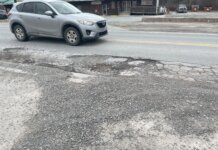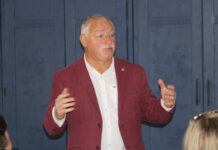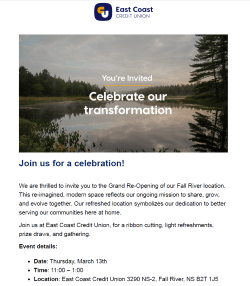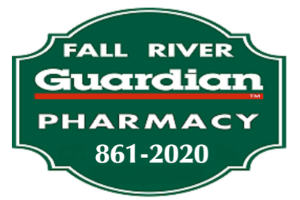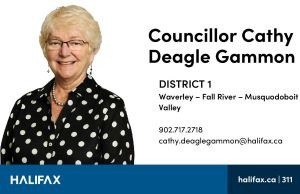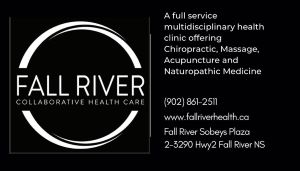FALL RIVER: Residents have formed an appeal committee in their hopes of having the decision by HRM council to approve the Carr Farm project overturned.
Dave Hawboldt is one of the residents on the appeal committee. Based on the municipalities development bylaws only residents withing a set area can appeal. In this instance that results in 115 homes.
In speaking with The Laker News, Hawboldt, the committee’s spokesperson, said with a number of developments being discussed for Fall River, totaling approximately 2,000 homes / apartments / townhouses, many citizens are concerned the developments are being considered on a case-by-case basis instead of through a holistic lens. That would take into consideration how the totality will impact our community.
“We are urging the city to take a strategic urban planning approach when considering these developments,” said Hawboldt. “This would ensure consideration of numerous factors including how the developments will impact the local environment, infrastructure (including local schools which are already at maximum capacity) and citizens.
“If approved, the city must consider what needs to be added to the area to support such developments i.e. proper sewage treatment facilities, city water, traffic entrances and exits to the area, public transportation, etc.”
Speaking specifically about the Carr Farm project, the committee is appealing the development for multiple reasons. This includes the sheer size; the environmental concerns that treated sewage effluent that will be dumped into Lake Thomas; the dangers on Highway 118 from the increased traffic; the effect on the wells of the surrounding homes; and the overall impact on the Fall River community and its citizens.
“I want to reiterate that we are not against sensible development in the area, but by definition of its massive size this development is far too large and unsuitable for the infrastructure of Fall River,” he said.
“If this development proceeds as planned the negative impacts to the community and its citizens will be enormous.”
ADVERTISEMENT
The below outlines some other specific concerns the group has:
Building Timeline:
The developer has requested construction hours to be from 7 am – 9 pm Monday to Friday and 7 am to 5 pm on weekends and holidays. The project will take 5 – 7 years to complete. This is subjecting at least 500 homes or more to noise, construction debris and traffic to homes for the next 5-7 years. It seems unacceptable to subject homeowners, living in a quiet residential community, to this amount of disruption to their lives over such an extended period.
Blasting:
The developer is planning for two floors of underground parking for 580 vehicles. This will create significant blasting and drilling. There are at least 500 homes or more near the construction site that rely on a water well to supply water to their homes.
Before and after the blasting is done every homeowner within 300m or more should have a water quality and flow test done on their well. This will be at the homeowner’s cost. If the blasting disrupts the underground aquifers there will be a significant impact on wells. It is well known that blasting of crystalline bedrock can contaminate water resources. Contamination of groundwater could result from a release of a regulated or unregulated substances into the groundwater.
In some instances, materials such as detonators and explosives are not entirely combusted during blasting and result in the release of soluble substances into the groundwater.
Additionally blasting may cause a shaking loose of silt, sand and rock particles, and chemical precipitates that line fracture surfaces in the subsurface which can result in increased turbidity in water derived from a bedrock well.
Traffic:
With the current proposal of 500 units plus 100 nursing beds there is possibility of 1,100 people with 580 underground parking spots and an unknown amount of above ground spots. If it is indeed a complex for those 55 and older most will have at least one car.
With the population working much later in life many of those residents will still travel to work. If we take 1/3 of the residents still working this could be a potential for at least 160 cars a day coming and going for work not to mention the nursing home staff, taxis, service people, etc. As we have not seen a traffic study yet, it would be reasonable to assume there could easily be 175-185 cars a day coming and going in peak hours.
The 118 Highway is dangerous which prompted the round about to be installed which has alleviated some of the traffic but not enough.
With the additional cars on the road, it will cause this situation to be worse.
ADVERTISEMENT
Sewage Treatment Plant and Lake Thomas:
Over the past several years, many residents have asked where the sewer and septic effluent would go. The committee now know the developer plans to build his own sewage treatment plant and run the treated effluent pipe through the neighborhood (Lake Thomas Crescent) which will involve digging up roads, installing a sewer pipe and disposing of the treated effluent into Lake Thomas.
Lake Thomas is part of the Shubenacadie Canal Waterway which is a unique aquatic system that holds important history; provides recreation, drinking water and nature to citizens and visitors; and is home to many aquatic species.
Based on the importance of this waterway, the committee feels it would be unacceptable for approval to be granted to pump treated wastewater effluent into any part of the Shubenacadie waterway.

